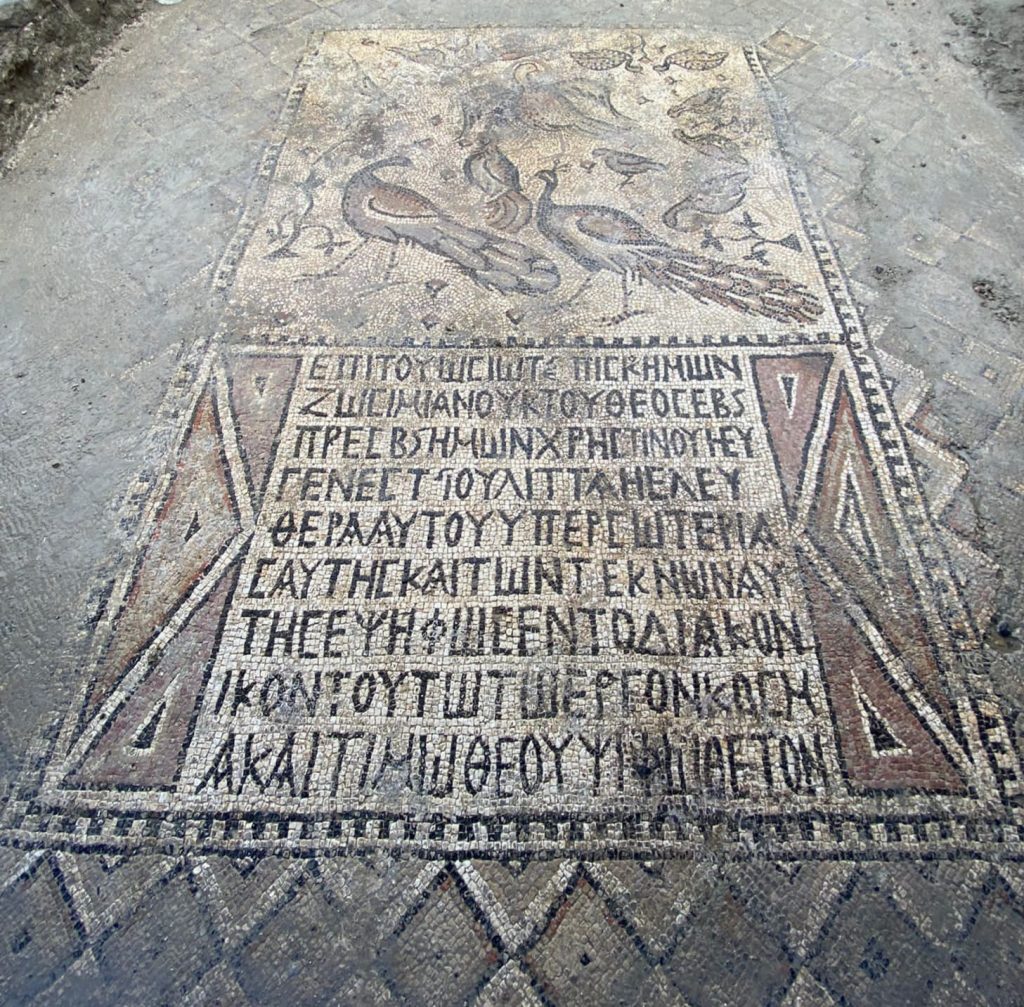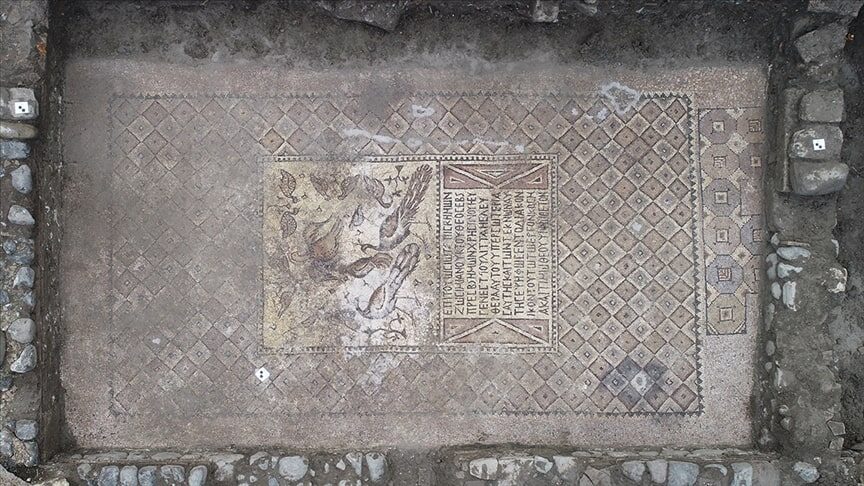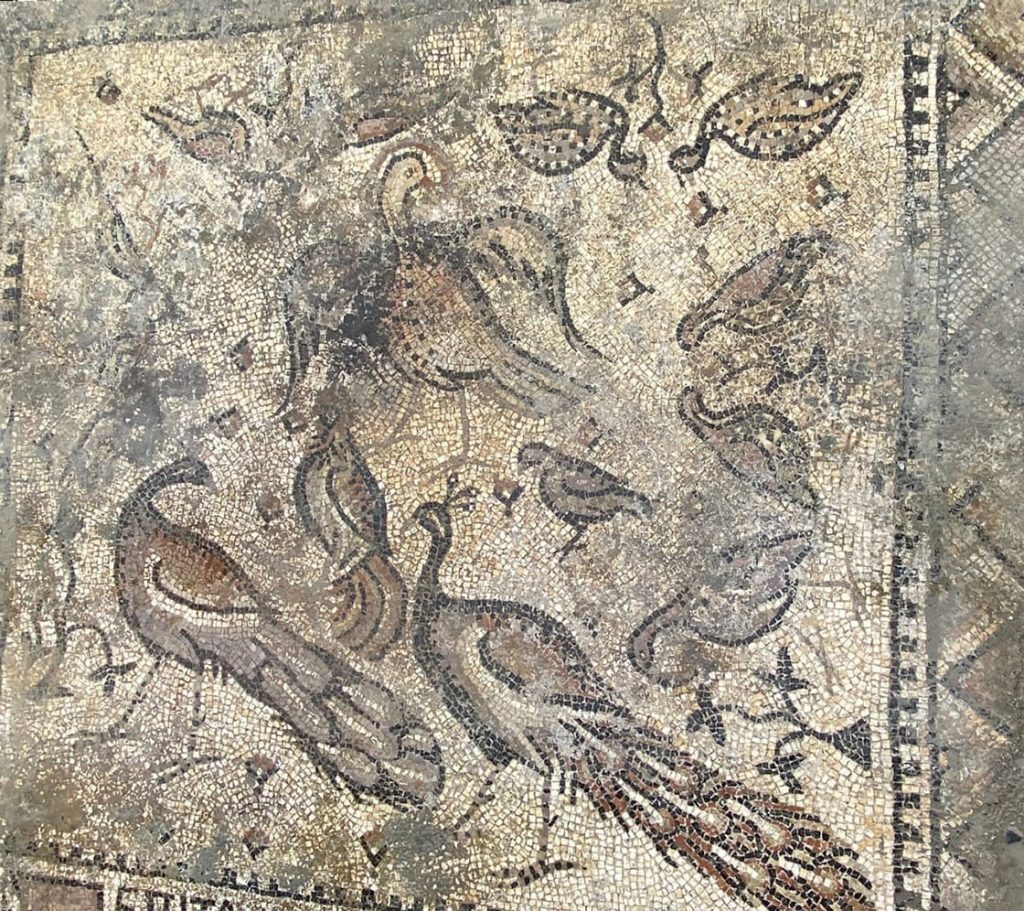Excavations continue in the area where the Church of the Apostles is the site, which Mehmet Keleş discovered while trying to plant orange saplings in his garden in Arpaciftlik district in 2007.
Archaeologists excavated in the region this season and found an area with mosaics, including a peacock figure and an inscription in which a slave thanked the god after being freed.
Ayşe Ersoy, Director of Hatay Archeology Museum, told Anadolu Agency (AA) that Hatay attracts attention with its history, nature, and culture and that Arsuz district has had an important place as a port city since ancient times.

Ersoy continued his words as follows:
"A three-naved basilica church being unearthed here. There are mosaics on the floor of the church. We learned from an inscription that this church was named the church of the three apostles. A different mosaic area was unearthed during the excavations carried out this year. A mosaic made by a slave to thank the god after his emancipation was unearthed. There were peacocks and an inscription on the mosaic. The mosaic depicts heaven."
Ersoy stated that there may be a large settlement in the area where the church is located, and therefore excavations will continue in the region.





wf don't like erdogan/wearing hijab too much, so unfortunately we do not go there as often as i would have liked 🧐